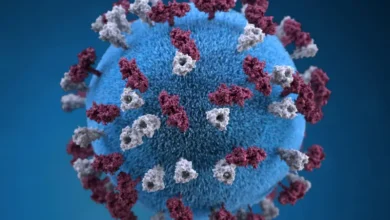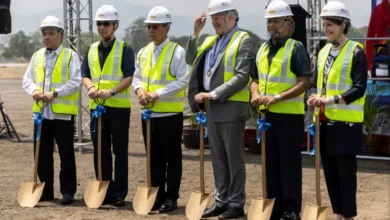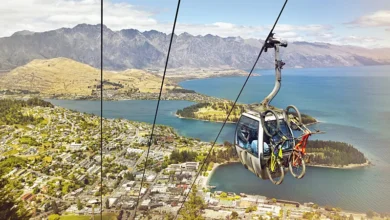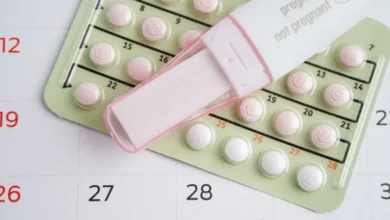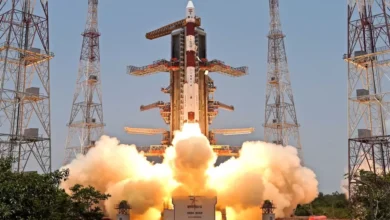Rice, two curries and dal: The Indian cafes where you can pay in rubbish
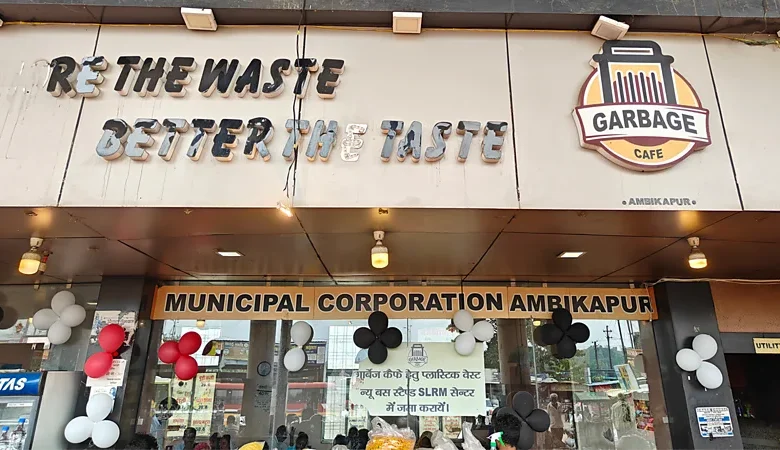
Garbage cafes are springing up across India. The BBC visits the city of Ambikapur to find out how much impact they can really have on plastic – and people.
As I approach India’s first Garbage Cafe on a cloudy and foggy winter day in early 2025, the smell of hot samosas immediately makes the place feel cosy. Inside, people are sitting on wooden benches holding steel plates filled with steaming meals, some chatting, others eating quietly.
Every day, hungry people arrive at this cafe in Ambikapur, a city in the state of Chhattisgarh in central India, in the hope of getting a hot meal. But they don’t pay for their food with money – instead, they hand over bundles of plastic such as old carrier bags, food wrappers and water bottles.
People can trade a kilogram (2.2lb) of plastic waste for a full meal that includes rice, two vegetable curries, dal, roti, salad and pickles, says Vinod Kumar Patel, who runs the cafe on behalf of the Ambikapur Municipal Corporation (AMC), the public body which manages the city’s infrastructure and services. “For half a kilogram of plastic, they get breakfast like samosas or vada pav.”
I can get food for my family in exchange for the plastic I collect. It makes all the difference in our lives – Rashmi Mondal
Ambikapur, a city in the state of Chhattisgarh in central India, has tried to use the scourge of plastic pollution to address hunger. It launched the Garbage Cafe in 2019, using the slogan “more the waste, better the taste”. Funded through AMC’s sanitation budget, it was set up near the city’s main bus stand.
“The idea for the need to tackle two existing problems in Ambikapur: plastic waste and hunger,” Patel says. The idea was simple: to encourage low-income people, especially the homeless and ragpickers (those who collect rags and waste for a living), to collect plastic waste from streets and landfills, and give them hot meals in return.
Rashmi Mondal is a local woman who brings plastic to the cafe. Every morning, she sets out early on the streets of Ambikapur in a search for discarded plastic – anything from old food wrappers to plastic bottles. For her, collecting such detritus is a means of survival.
“I’ve been doing this work for years,” Mondal says, looking at the small pile of plastic she has gathered. Previously, Mondal used to sell the plastic she collected to local scrap dealers for just 10 Indian rupees (£0.09/$0.12) per kilogram – barely enough to survive on. “But now, I can get food for my family in exchange for the plastic I collect. It makes all the difference in our lives.”
Many people who arrive at the cafe come from underprivileged backgrounds, says Sharada Singh Patel, who has worked at the cafe since its inception. “If food is available in place of plastic, we’re not only helping to fill empty stomachs but also contributing to cleaning up the environment.” On average, according to Vinod Patel, the cafe feeds more than 20 people per day.
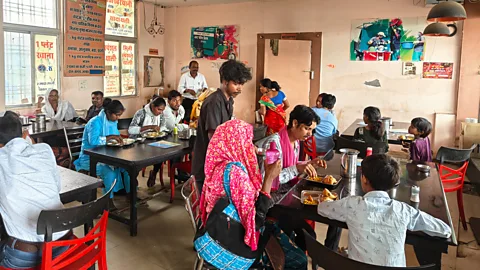
The cafe has also had an impact on the amount of plastic waste going to landfill, says Ritesh Saini, who coordinates sanitation and waste management in the city for Swachh Bharat Mission Urban, a cleanliness and sanitation initiative launched by the Indian government in 2014. It has collected almost 23 tonnes of plastic in total since 2019, he says, contributing to a wider fall in the plastic going to landfill in the city from 5.4 tonnes per year in 2019 to two tonnes per year in 2024.
It’s a small proportion of Ambikapur’s overall plastic waste, which sat at 226 tonnes in 2024, almost all of which is already recycled, according to Saini. But the cafe aims to collect plastic that slips through the main collection network, he says, as well as to encourage public participation. It sits alongside a wider push in the city to reduce and recycle plastic waste, including stricter rules on plastic use and better ways of sorting and managing waste, he says.
This push has helped the city earn a reputation as one of the cleanest in India. Ambikapur produces 45 tonnes of solid waste daily, Saini says, and “once struggled with a sprawling 16-acre [6.5 hectare] dumping ground located 3.5km [2.2 miles] away.” But in 2016, the AMC converted it into a park and launched the city’s zero-waste decentralised system, removing the need for such a dumping ground.
Collected plastic gets recycled to make granules which are used for road construction or sold to recyclers, generating an income for the local government. Wet waste is composted and only a small amount of non-recyclable waste is sent to cement factories for fuel, according to a 2020 government report. Thanks to this and similar efforts, Ambikapur has become known as a “zero landfill” city.
The plastic collected in the garbage cafe is sent to specialised local waste collection centres (SLRMs) run by AMC. Ambikapur now has 20 of these decentralised centres, which sort collected waste into more than 60 categories to allow for maximum recovery of recyclables. The centres employ 480 women, called swachhata didis or “cleanliness sisters”, to do this waste segregation as well as going door-to-door each day to collect household waste. They earn 8,000 to 10,000 Indian rupees (around £80/$100) a month.
“Around 30 to 35 people bring plastic here every day,” says Sona Toppo, who runs one of these waste collection centres. “While some are regular contributors, others participate occasionally.” Many different kinds of people bring plastic to the centre, she adds, from ragpickers to shop workers and general labourers.
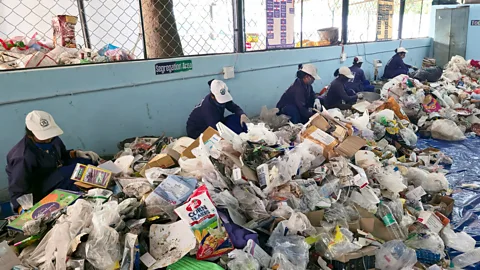
Staff at the waste collection centre are provided with gloves, masks and other sanitary facilities to reduce health risks while handling waste, says Saini, although those collecting the waste are not provided with this hygiene support. Minal Pathak, an associate professor at Ahmedabad University in Gujarat in western India who researches climate mitigation in urban environments, notes that without basic protective gear, ragpickers can face daily exposure to bacteria, sharp objects and toxic waste, leading to a risk of illness.
Shashikala Sinha, the president of the Swachh Ambikapur Mission City Level Federation, a cooperative society which organises and manages the women who collect the waste, says that the centres have collected and recycled approximately 50,000 tonnes of dry waste such as plastic, paper/cardboard, metals and e-waste since they began in 2016.
The door-to-door waste collection idea has worked so well that it has become popular as the “Ambikapur model” and is now used all over the state of Chhattisgarh in 48 wards. Ritu Sain, a government official who drove zero-waste model in Ambikapur, has said the aim was always to solve the problem not only for Ambikapur but also for other mid-sized cities facing similar constraints. “Our aim was to create a model that would be operationally doable, environmentally sustainable, and financially viable,” she wrote in a blog for Princeton University in 2025.
Garbage cafes have also sprung up in other parts of India. In Siliguri in West Bengal, a scheme launched in 2019 to give free meals in exchange for plastic waste. The same year a new scheme in the town of Mulugu in Telangana state started offering a kilogram (2.2lb) of plastic for a similar weight of rice. In Mysuru, Karnataka, a scheme launched in 2024 allows locals to swap 500g (1.1lb) of plastic at any state-funded Indira canteen for a free breakfast, or 1kg (2.2lb) for free meal, according to local media. Meanwhile, a campaign in Uttar Pradesh, hands out sanitary pads to women in exchange for plastic waste.
It’s a good beginning, but we need bigger changes too – Minal Pathak
However, such schemes have not always run without a hitch. The city of Delhi also launched a plastic waste collection initiative using garbage cafes in 2020 which included more than 20 outlets. But the operation has slowly folded, facing challenges such as a lack of public awareness, poor waste segregation practices and inadequate support for recycling infrastructure, several of these cafes said. Saini suggests that the lower enthusiasm for garbage cafes in Delhi might be due to fewer people being on low incomes than in Ambikapur.
The emissions from travel it took to report this story were 0kg CO2, as Hazra was in the area for other reasons. The digital emissions from this story are an estimated 1.2g to 3.6g CO2 per page view.
Outside India, Cambodia has adopted similar programmes to try to combat waste and hunger simultaneously. In floating communities around the plastic-choked Tonle Sap Lake, for example, people can exchange collected plastic waste for rice.
Pathak says waste collection initiatives like those in Ambikapur can also help raise awareness about the negative implications of plastic waste. But more data should be made available by the government to help other cities evaluate whether the garbage cafe approach is right for them, she says.
And while the plastic waste collection schemes have had an impact, they aren’t able to tackle problems such as the overproduction of plastic, non-recyclable plastics and lack of proper segregation in most Indian households, adds Pathak: “It’s more like a quick fix that deals with the surface issues rather than the root causes of the plastic problem.”
Still, she says, these efforts are helpful. They teach people about the problem and show that local solutions can have an impact. “It’s a good beginning, but we need bigger changes too.”





